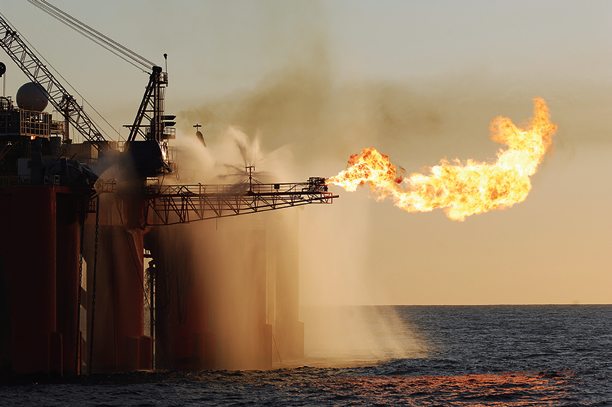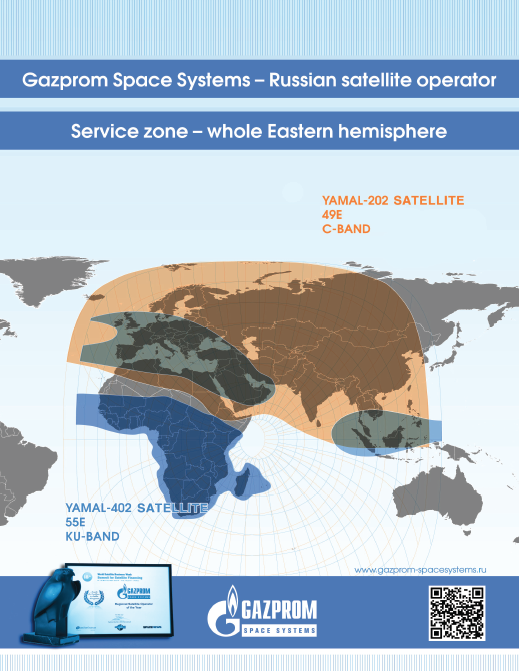Having worked in this industry for more than 20 years, I feel comfortable asserting that I have witnessed communications go though an astronomical transformation. Even—especially—within the satellite industry.

There has been an exponential growth in the amount of data that has been generated in some of the more complex uplink facilities. Even as recently as eight to ten years ago, a typical site required 256Kbps, at the most. Today, many of the offshore and onshore facilities Signalhorn supports for its energy customers require more than 4Mbps, and some as many as 8Mbps.
There have also been exponential technological advances in the way communications are managed at remote sites, as well as on the satellites, with more efficiency and faster throughput through deployment optimization. We’ve seen this use grow immensely over the last several years, despite some energy companies’ increasing desire to remotely automate and manage their sites.
Remote and deep-water platform operators are increasingly deploying advanced technologies on rigs, while reducing the number of crew required for each site. This reduction in manpower is driving new applications that allow for remote monitoring. However, simultaneously, such applications require more bandwidth. Some operators are investing more than a million dollars per rig in additional equipment for this remote management capability.
Another noticeable change is the focus on crew morale. Crew members want more than the ability to call friends and family on the phone—they expect Skype, social media, You Tube and other communication applications that consume large amounts of bandwidth. Providing these services to an entire crew becomes a bandwidth challenge for these operators. They must cope with the challenge of investing in additional bandwidth and optimization to ensure high crew morale and to attract and retain experienced and valuable personnel.
Safety requirements have also become more rigorous, partially as a result of the April 2010 oil spill in the Gulf of Mexico. Data replication, video CCTV and storage of critical data have become extremely important requirements for oil exploration companies.
Signalhorn anticipates that these new safety requirements will become the norm as governments continue to adopt new regulations requiring rig operators to manage data in a more secure and sophisticated manner. Such regulations will require management of data that is produced at the site and new regulations for storing data—on site and remotely—in a manner where information can be retrieved on demand. These regulations will improve safety standards but, at the same time, may become cost-prohibitive and possibly even cause some energy companies to reconsider the cost benefits of operating in remote regions.
Signalhorn is continually working with its customers to determine the optimal means of storing and managing their data to facilitate and streamline data retrieval when necessary. Part of the question going forward relates to the significant data storage requirements governing bodies are going to require oil exploration companies to maintain: will it be data gathered over the previous 24 hours, week, or year? Regulations continue to be developed regionally and we are gaining a better understand these requirements as they impact our customers.
Signalhorn also has innovative Cloud computing and Cybersecurity platforms, with pilots underway for our remote and deep-well operator customers. So far, the results are encouraging. However, while oil and gas customers are increasingly using this Cloud technology, we see little pickup when it comes to real-time drilling applications.
Another current trend we are seeing is the use of submarine fiber at remote rigs where there are large concentrations of personnel requiring a high amount of bandwidth. While a niche sector, this solution is driven by bandwidth demands on offshore facilities and needs to be justified in terms of usage. Signalhorn currently operates submarine fiber networks as part of our technology-agnostic approach to help companies manage and monitor their facilities remotely.
If we look at the industry at large, satellites are still the predominant provider. Even in cases where submarine fiber is deployed, VSAT is used as backup just in case there is a break in the fiber. However, from a terrestrial standpoint, fiber is inevitable and we continue to see interesting trends, especially in West Africa.
Although the major cities in this region already have fiber, the challenge as always remains the ‘last mile.’ Due to security reasons and other geopolitical factors, companies have not been able to provide fiber to their remote and outlying facilities in this region. While fiber may not currently be an option, satellite remains a reliable choice, especially if companies can deploy an antenna at their facility. Consequently, while demand and expansion of fiber networks in this region continues to grow, there will always be a demand for satellite-based communication.

In remote areas, it is challenging to guarantee a high level of service at a low cost, especially for energy companies operating in difficult-to-reach locations where the need for experienced people and available spare equipment to ensure uptime is at a premium. Communications systems on a rig are a critical differentiator in terms of working efficiency. However, the outlay—even including all the IT infrastructure and satellite capacity usage—is probably less than one percent of the cost to operate a deep water facility, which typically carries close to a billion dollars in equipment.
The ‘Golden Triangle’ of Latin America, the Gulf of Mexico and West Africa will dominate deep-water expenditure over the next five years. With African developments—largely concentrated in Angola, Ghana and Nigeria—and Brazilian projects still dominant in the forecast, development in these regions represents a significant element of Signalhorn’s anticipated growth. These regions account for an estimated 60 to 75 percent of our energy revenue.
Signalhorn works closely with satellite operators in these regions to ensure we have ample capacity while also tracking drilling activities. The exploration and production companies will be the ones that determine where the next drilling operation is going to take place. When they decide to explore a new area or region, we are already there, fully prepared to deliver trusted networks to meet their high bandwidth communications requirements.
By following this business model, Signalhorn realized a significant growth rate last year. We see these oil and gas market trends continuing in the future. This is definitely an exciting time to be in the industry, with the advent of Ka-Band and other new technologies that enhance cost-effectiveness.

The future of this market segment looks very bright, for Signalhorn and the industry as a whole. We will continue to engage with satellite operators serving oil and gas regions to manage and monitor satellite capacity and to ensure our customers have what they need to continue operating profitable operations in conformity with government requirements.
For additional information regarding Signalhorn, please visit http://www.signalhorn.com/
About the author
Gary Bray is in charge of Signalhorn’s Energy Sales division and is a vice president with the company.


